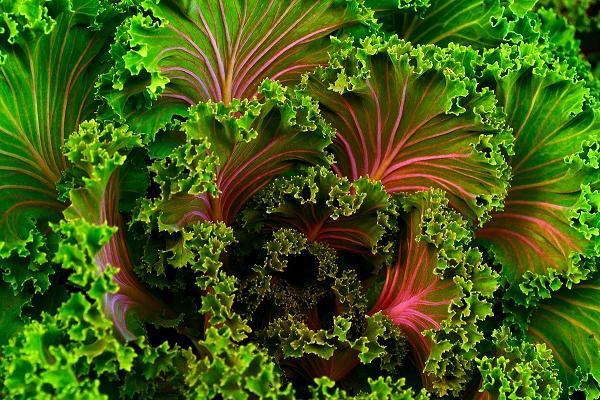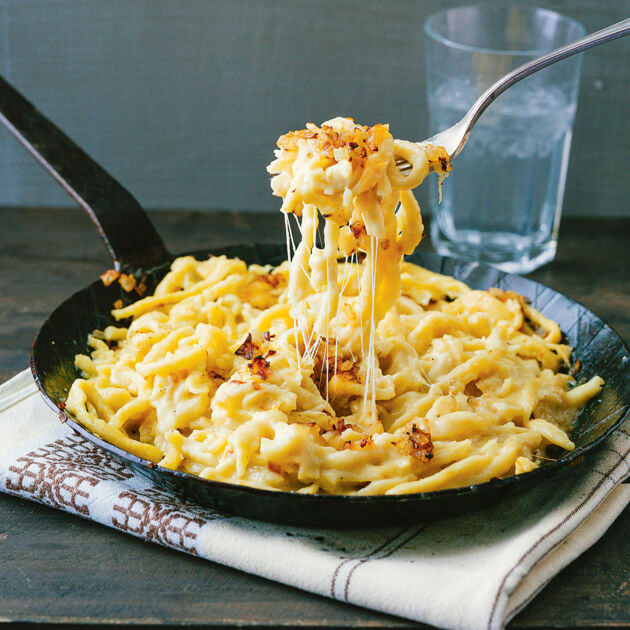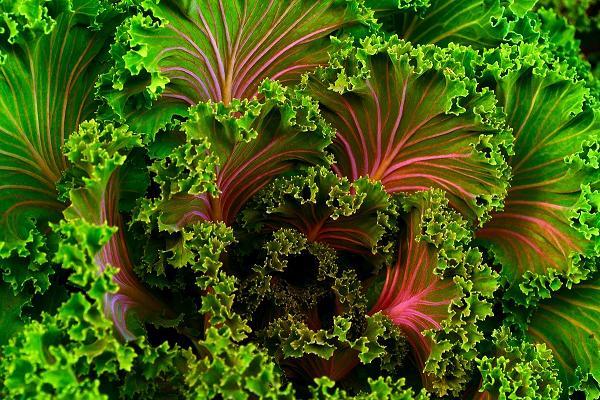Theodor Hahn, a pharmacist, gained fame as a vegetarian advocate during this period. By 1890, the first vegetarian organizations were established in Leipzig. Fast forward more than a century, and approximately 5% of Germans identify as vegetarian, while 1% adhere to a vegan lifestyle.
Veganism and Vegetarianism on the Rise
In recent years, Germany has witnessed a surge in vegetarianism and veganism. Despite being a nation known for its meat-centric culture, the market for vegan products in Germany is unparalleled globally. Companies actively release more vegan products in Germany than in any other country.
Moreover, the number of vegans continues to rise steadily, indicating a noteworthy shift in dietary choices. This increasing acceptance is reflected not only in product availability but also in the evolving attitudes toward plant-based lifestyles.
Universities and higher schools are always good indicators for a more or less distinctive vegetarian community, and in every cafeteria or local store you can get at least one meatless meal. That’s also the reason why you won’t have any problems finding meat-free alternatives in the major cities of Germany, even if you are vegan.
Hidden Meat in Popular Dishes
When it comes to traditional German meals, you will soon notice that meat is often an essential ingredient. Even if you don’t see it at first sight, many foods do contain a certain amount of meat, like soups or the so-called Eintopf which is available in many different styles.
Bratkartoffeln, or pan-fried potatoes, also appear to be a seemingly innocent side dish accompanying numerous main courses in northern Germany.
Yet, what the menu might not explicitly say is that these potatoes are frequently cooked in pork fat and typically include a mix of pan-fried bacon lardons.
Also, in traditional German potato salads, mayo is omitted, and the dressing is made using a broth, which is often beef-based, so it’s advisable to ask the restaurant staff about this dish before placing your order.
So, beware of hidden meat products in your meal when you are planning to have a typical German dinner, and better ask if you are in a restaurant. Cream cheese and sour cream are also popular ingredients, so vegans should keep that in mind when eating out. Here are also some German phrases that can be handy when exploring a restaurant menu:
- “Haben Sie auch eine vegane Option?” (Do you have a vegan option?),
- “Können Sie das vegetarisch machen?” (Could you make this vegetarian?),
- “Könnte ich das ohne Fleisch haben?” (Could I have this without meat?)
Vegetarian Alternatives
You will generally be able to find vegetarian food in most of the restaurants in Germany but keep in mind that smaller ones in rural areas might not offer such. A good alternative, in this case, is to just order some “Beilagen” (side dishes).
For example, if you are in Franconia, “Kloß mit Soß,” i.e. dumplings with brown sauce, is a popular meat-free alternative not only for children but also for vegetarians.
Also, Spätzle can be a very satisfying main dish. Try some Käsespätzle – Spätzle with onions and lots of cheese. Besides this, many of the sweet dishes of traditional German cuisine are suitable for vegetarians, such as Kaiserschmarrn or Dampfnudeln.
In northern Germany, old-school food does, of course, often contain fish of some kind. If you are a pescetarian, you won’t have any problems.
When it comes to veganism, it gets a bit more complicated because traditional food mostly contains milk or eggs in certain amounts. In this case, you should just be slightly more aware, but you might find yourself some satisfying food to enjoy.

Vegetarian and Vegan Street Food
But what about a quick snack on the streets? Germans love Bratwurst, Fischbrötchen, and Currywurst which are not the right choice for vegetarians and the all-time favorite street food of Germany is Döner.
Although Döner usually contains meat, you can always have a vegetarian variation with cheese. Other healthy alternatives at the Döner-stand are Falafel, Gemüse Kebab, or Halloumi. Turkish restaurants in bigger cities are also a haven for vegetarians and vegans.
German bakeries are also a must when you are visiting the country. They can be found on every corner, and offer baguettes, rolls, croissants, pizza, and delicious pastries, along with many bread varieties.
Germans are also famous for making the best soft pretzels and have found countless ways to indulge in these delightful treats. The traditional twisted shape, referred to as Brezeln or Brez’n for short, is enjoyed in various ways. Whether plain, adorned with sesame seeds, pumpkin seeds, or sprinkled with salt, these pretzels are often sliced open and generously layered with half-inch thick spreads of butter, cream cheese, and chives.
You can see that even if you are vegetarian or vegan, you don’t have to suffer in Germany. But sometimes, you’ll just have to be a bit more patient.
Meat Substitutes
Contrary to the meat-centric stereotype, Germans are embracing meat substitutes. For instance, the influential meat producer Rügenwalder began offering vegetarian and vegan alternatives in 2014, and by 2020, they boasted more vegetarian options than meat-based ones.
Also, Naturgut is Penny’s popular exclusive line of vegetarian products, such as veggie burgers, tofu, and bolognese, along with a variety of sauces and spreads. Naturgut products are known to uphold a quality that competes with the finest options in the market. Additionally, for individuals adhering to a vegan diet, they offer a range of dairy-free chocolate selections.
Traditional German cuisine also offers ample vegetarian options. From the annual asparagus season to dishes like Sauerkraut, Hefeklöße, and delicious baked goods, you can enjoy a delicious meal beyond the popular classics for meat eaters.
Potato Dumplings and Bread Dumplings
Potato dumplings (called in German “Kartoffelklöße“) are very popular in Bavaria, Thuringia, and the Rhineland regions but are also served throughout Germany. They are typically made from a blend of raw and boiled potatoes, cooked in salted water or pan-seared with butter. A regional variation known as Thüringer Klöße, hailing from Thuringia, incorporates a mix of potatoes and bread.
Pfifferlinge mit Semmelknödel (chanterelle mushrooms with bread dumplings) is another vegetarian dish that offers a delightful culinary experience. The chanterelle mushrooms combined with rich heavy cream, onions, and precisely balanced seasonings create a truly mouthwatering sensation. The dish also offers a fantastic solution for repurposing old bread, resulting in dumplings with a soft and fluffy interior complemented by a subtly crispy crust.
Flammkuchen

This German classic is rapidly garnering global acclaim. While the traditional rendition features bacon and onions, the vegetarian version is equally delicious.
A slender, crispy crust is topped with velvety crème fraîche, caramelized onions, and a medley of veggies of your choosing. Mushrooms, roasted peppers, and zucchini are popular choices but don’t hesitate to unleash your creativity and experiment with your preferred vegetables.
Potato Pancakes
Commonly referred to as Kartoffelpfannkuchen (literally: potato pancakes) or known as Reibekuchen in the Rheinland, particularly in the Cologne area, this savory vegetable delight is typically adorned with Apfelmus (apple sauce). Alternatively, it can be enjoyed with savory toppings such as Leberwurst, Lachs (smoked salmon), and Frischkäse (sour cream).
Käsespätzle with crispy fried onions

Spätzle are a type of Central European soft egg noodles typically served as a side dish for a main course with meat and sauce. The German word is the Swabian and Alsacian diminutive of Spatz and literally means “little sparrow”. They are also known as Knöpfle.
These can also be the main ingredient for delicious meals such as Käsespätzle (meaning “cheese spätzle”), a German form of macaroni and cheese, served with Emmenthal cheese and sweet crispy fried onions.
It’s a staple of festivals and restaurants and a great vegetarian option for those who want to go to Oktoberfest, for instance, and try veggie German food.
Spargel/ Asparagus
Asparagus holds a favored position as a seasonal side or main dish in Germany, with an annual per-capita consumption reaching 1.5 kg (3.3 lb). The white asparagus variety holds particular favor and is more popular than green asparagus.
During the asparagus season (Spargelzeit or Spargelsaison in German), which traditionally begins in mid-April and ends on St. John’s Day (24 June), some restaurants dedicate entire menus exclusively to white asparagus.
Spargelcremesuppe, or cream of white asparagus soup, is also a favored German dish, with a delicate earthy flavor. The soup features a luscious foundation made from fresh cream and butter and the addition of pureed white asparagus makes it a real treat.
Grüne Soße mit Eiern
Grüne Soße, also known as Frankfurt Green Sauce, is a culinary delight you shouldn’t miss, especially if you appreciate flavorful cuisine. This classic green sauce features a sour cream base blended with seven aromatic fresh herbs like dill, parsley, and chives. Typically accompanied by boiled potatoes and hard-boiled eggs, this dish offers a light yet filling option with a satisfying protein component.
Eier in Senfsoße
This one is basically hard-boiled eggs in mustard sauce. It is a filling meat-free dish commonly found in traditional German restaurants. This simple dish consists of four hard-boiled egg halves covered in a thick and tangy mustard sauce. While it may seem unusual, this straightforward dish is simple to prepare and can be a tasty option, especially when staying with friends in Germany.
Dishes with Kohlrabi
Kohlrabi (also called German turnip or turnip cabbage) is a unique vegetable native to central Europe and often used in traditional cuisine in the region. Despite its somewhat weird appearance, once cooked, kohlrabi offers a pleasantly crisp texture and a mild, slightly sweet flavor, making it a culinary gem worth exploring.
Rahmkohlrabi, a favored method of preparing kohlrabi, involves chopping it up and sautéing it with butter and cream. Then you’ll be able to serve a delightful creamy vegetable dish that showcases the unique qualities of kohlrabi.
Maronensuppe
Maronensuppe is a German soup that features chestnuts in a creamy, savory broth, ideal for chilly autumn days or as a starter for a cozy dinner gathering. It’s easy to prepare at home and a delightful means to infuse seasonal ingredients into your meals.
If you’d like to know more about food in germany, check out our archive of articles on German cuisine. We’ve covered a whole host of topics about food culture in Germany!
Tips on How to Find Vegetarian Food in Germany
Happy Cow, available as both an app and a website, serves as a comprehensive directory of restaurants with vegan and veggie options spanning 180 countries worldwide. Similar to Google and other search platforms, it provides nearby options based on specified filter criteria.
Creating an account is free and every business featured on Happy Cow ensures the availability of at least 1-3 vegan options or products, making it a great resource for those who don’t eat meat and are looking for plant-based food.
FAQs about German cuisine and vegetarian food
Here are some of the most frequently asked questions about vegetarian food and vegan options in Germany.
What percentage of Germans are vegetarian and vegan?
The exact percentage of vegetarians and vegans in Germany can vary, but recently around 10% of the German population have said they identified as vegetarian, and approximately 1-2% as vegan.
Is Germany a vegan-friendly country?
Yes, Germany is generally considered a vegan-friendly country. Many restaurants, especially in urban areas, offer diverse and delicious vegan options. Supermarkets also stock a wide range of plant-based products. The awareness and acceptance of vegetarian food and veganism make it easier for vegans to find suitable food choices in Germany.
Is Germany good for vegetarians?
Yes, Germany is generally good for vegetarians. Vegetarian options are widely available in restaurants and grocery stores. German cuisine includes many vegetarian dishes, and there’s an increasing awareness of vegetarian preferences.
Summing Up: Being Vegan and Vegetarian in Germany
So, being vegan or vegetarian in Germany is not only possible but increasingly embraced. The country’s rich history of vegetarianism, coupled with the rising availability of plant-based options, makes it a welcoming place for those seeking vegetarian and vegan versions of their favorite meals.
From dishes in traditional German restaurants to street food, Germany offers a diverse array of vegetarian-friendly and vegan choices. If you’d like to know more, please check out the blog at SmarterGerman.

